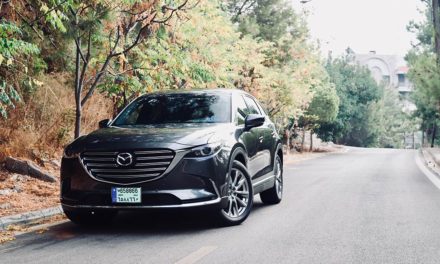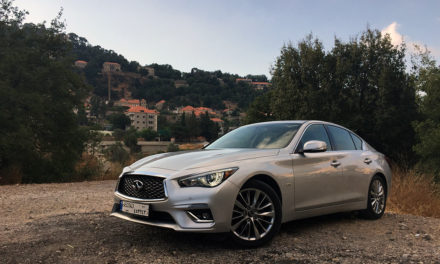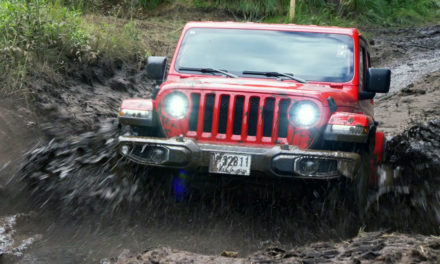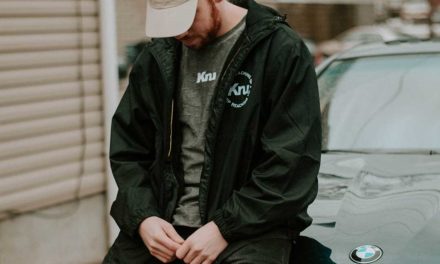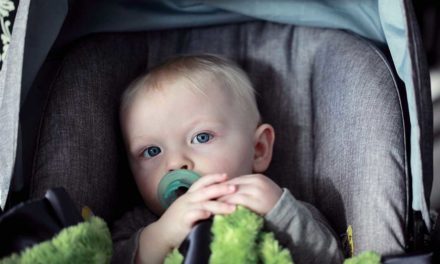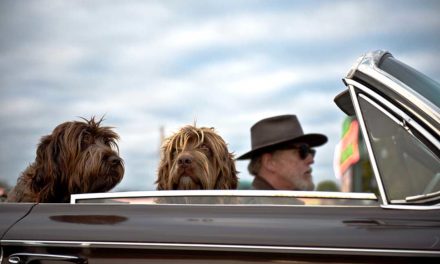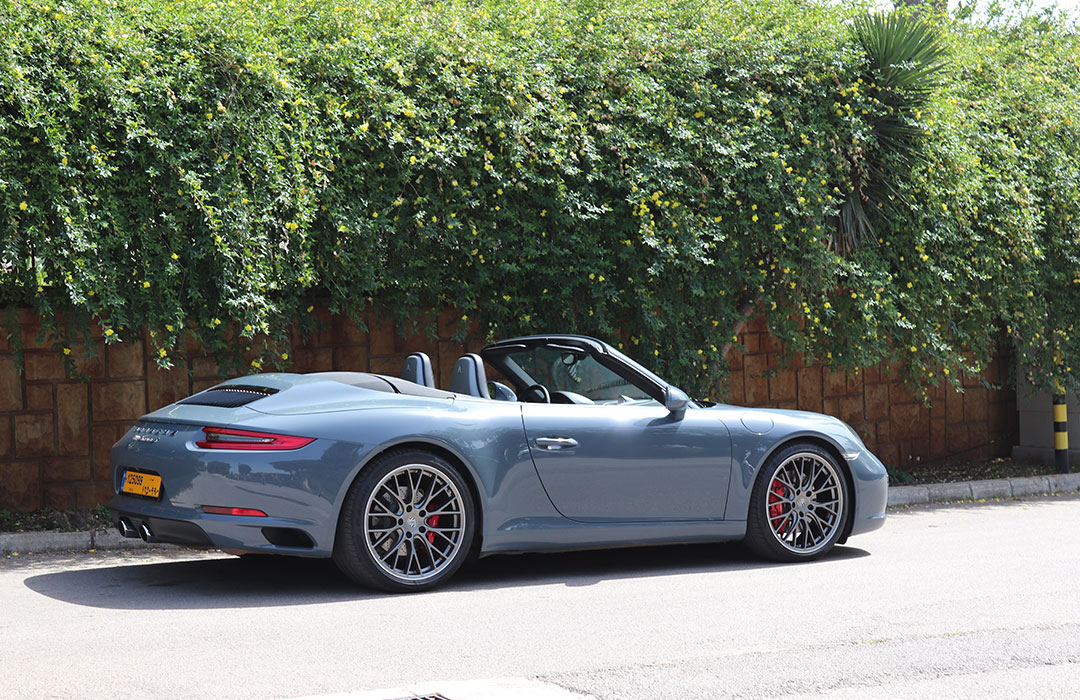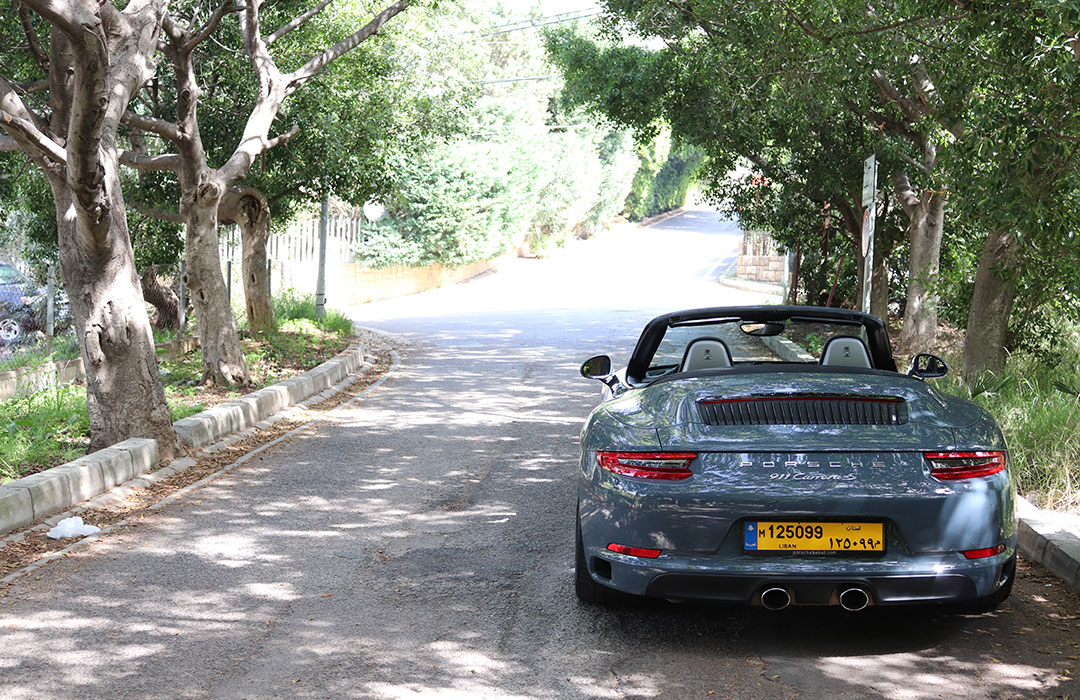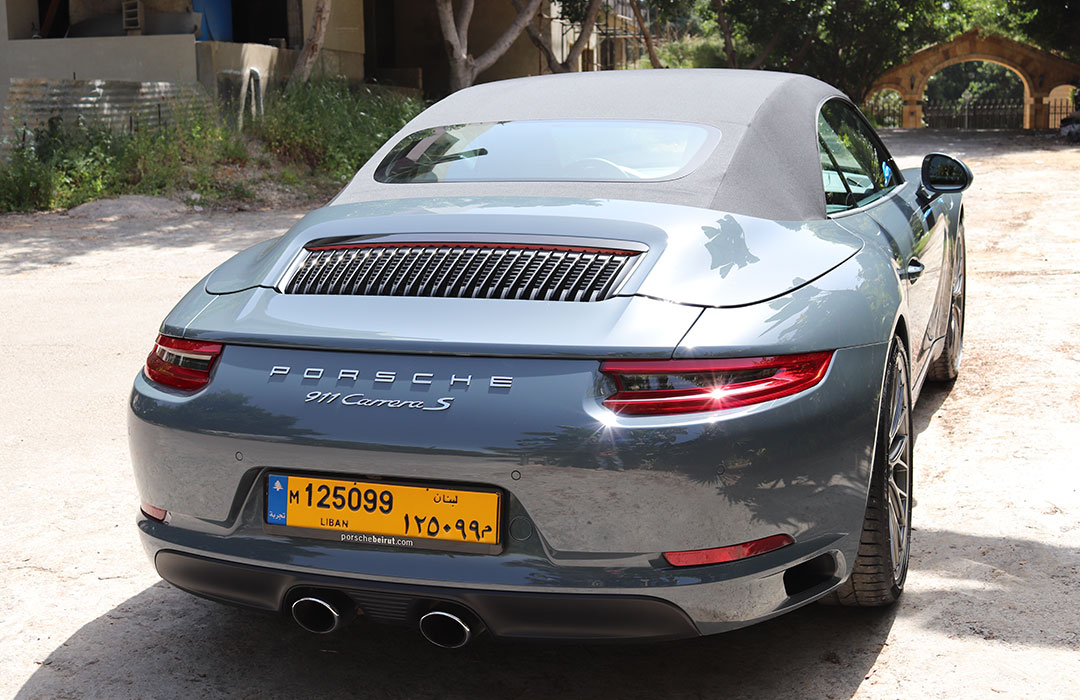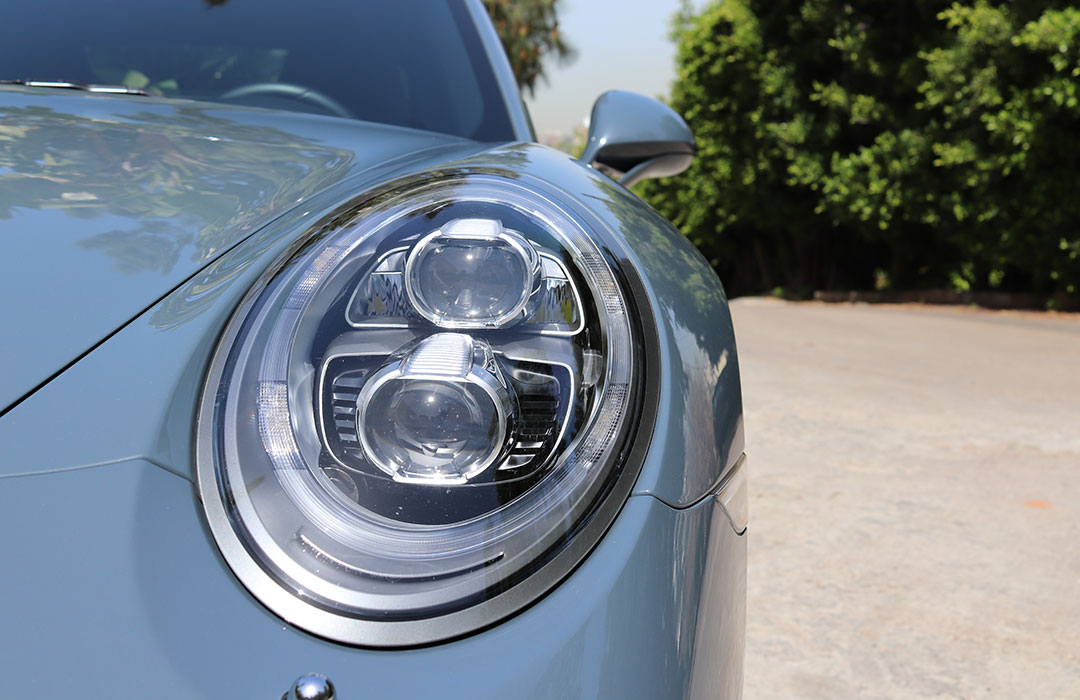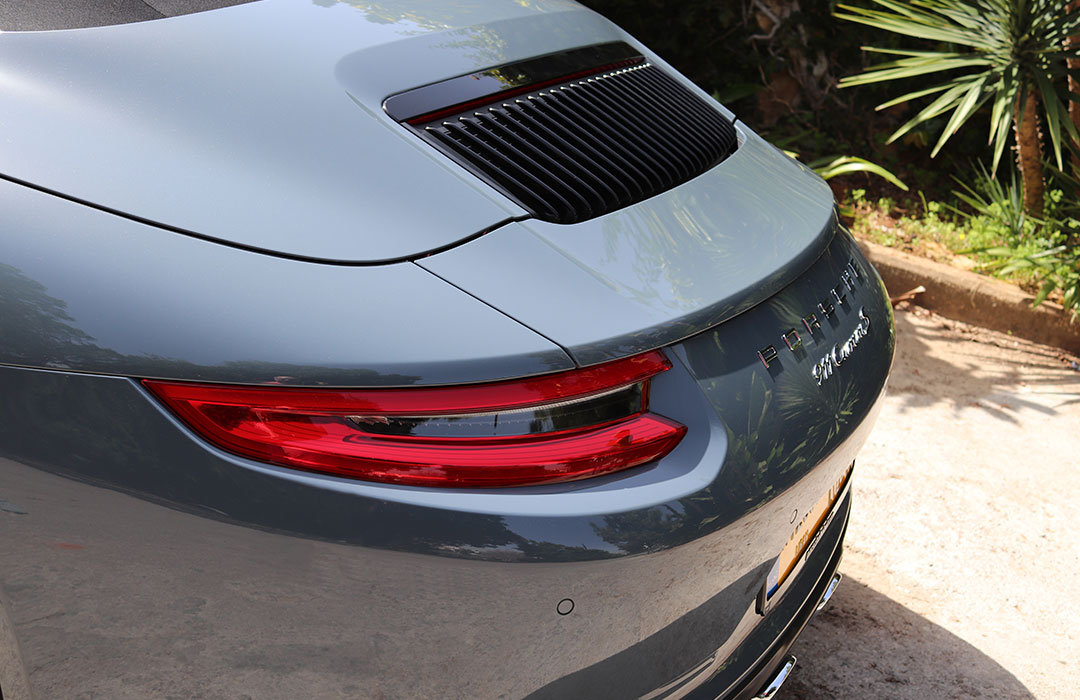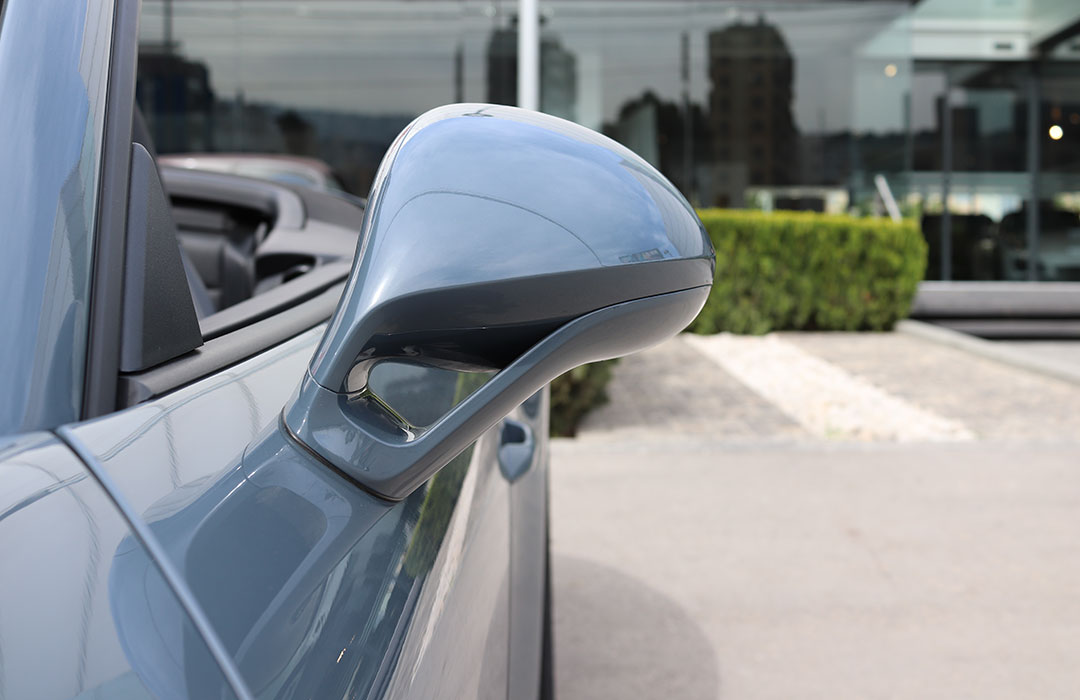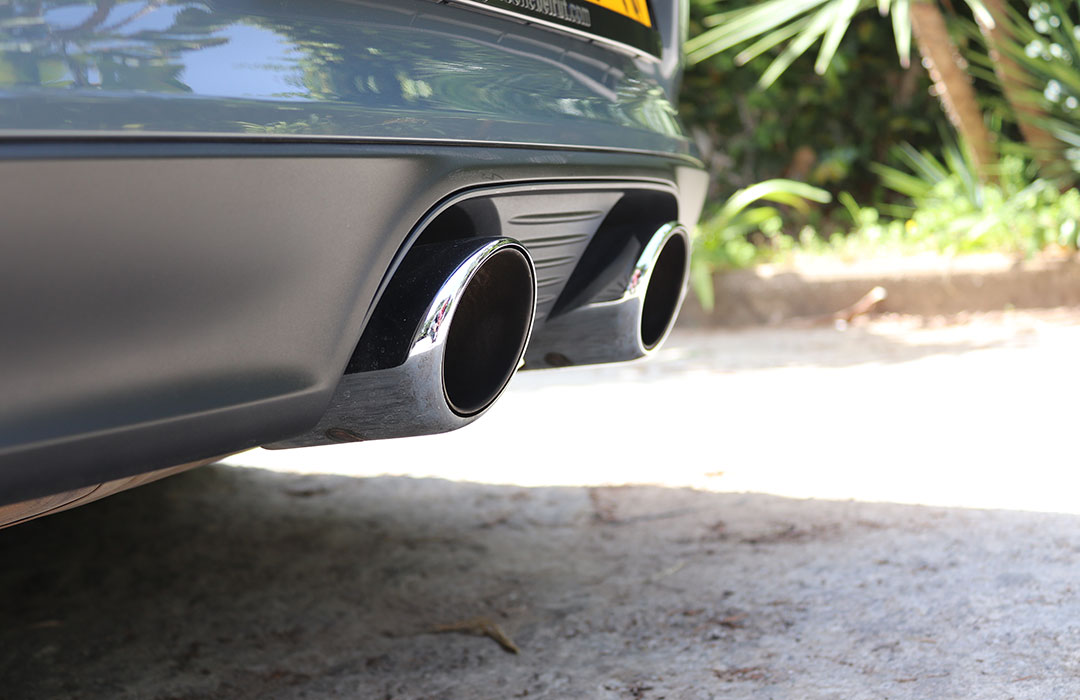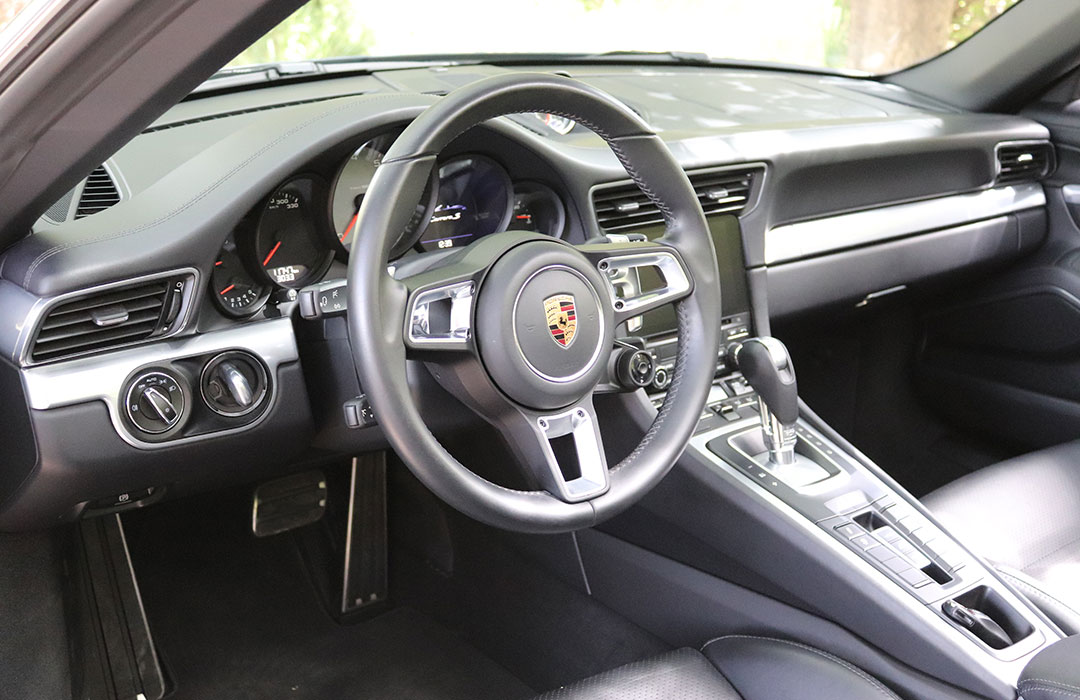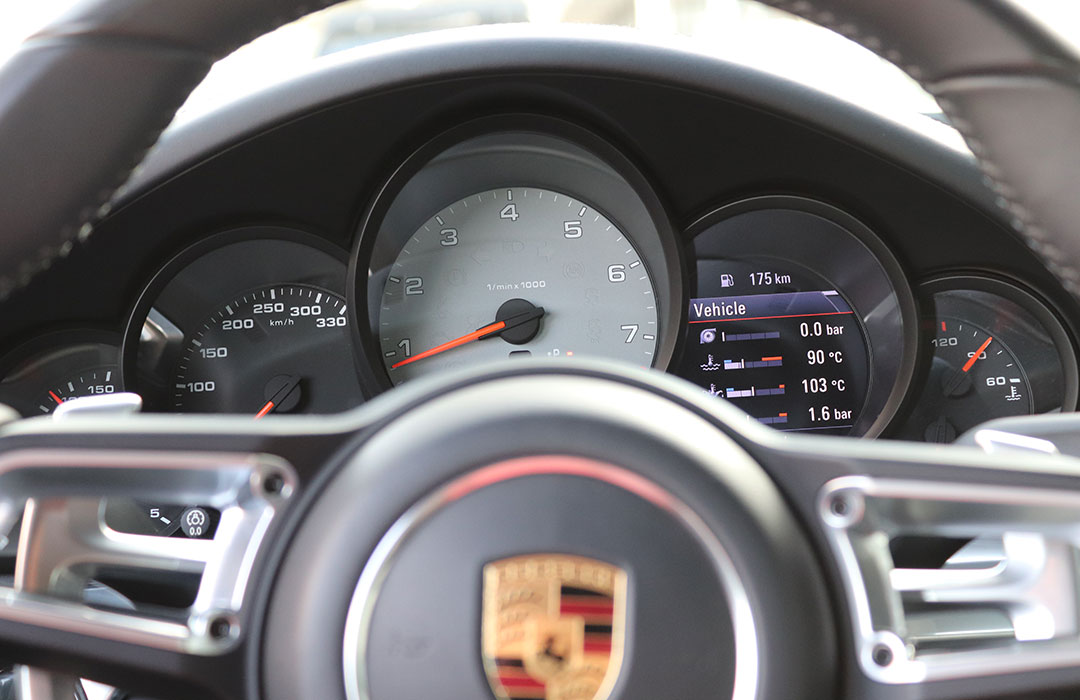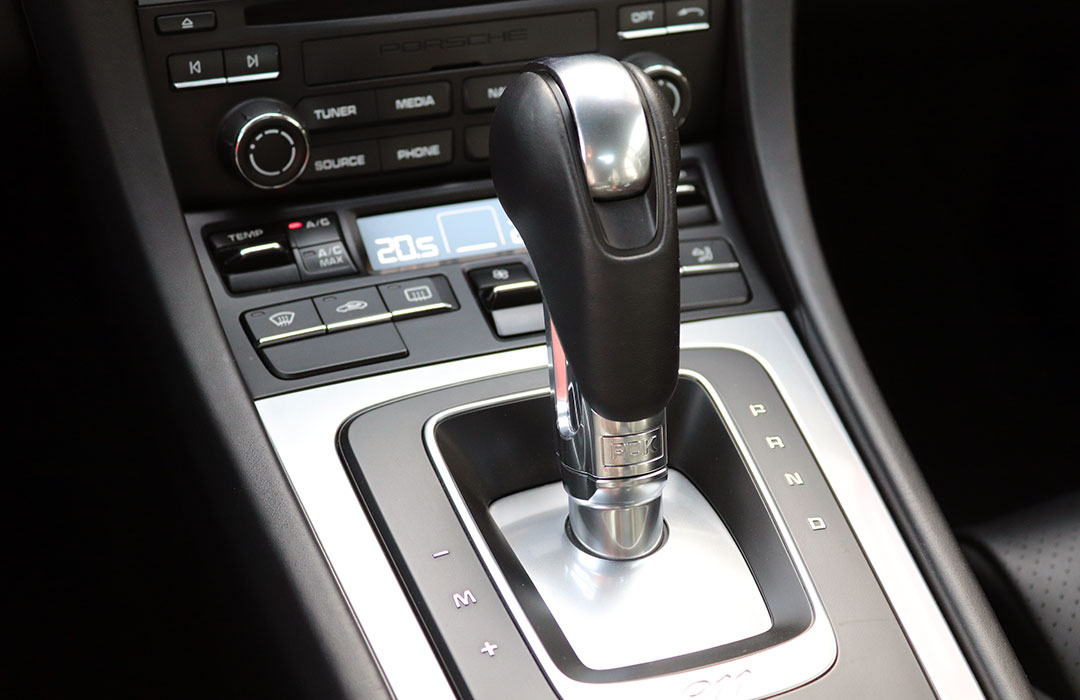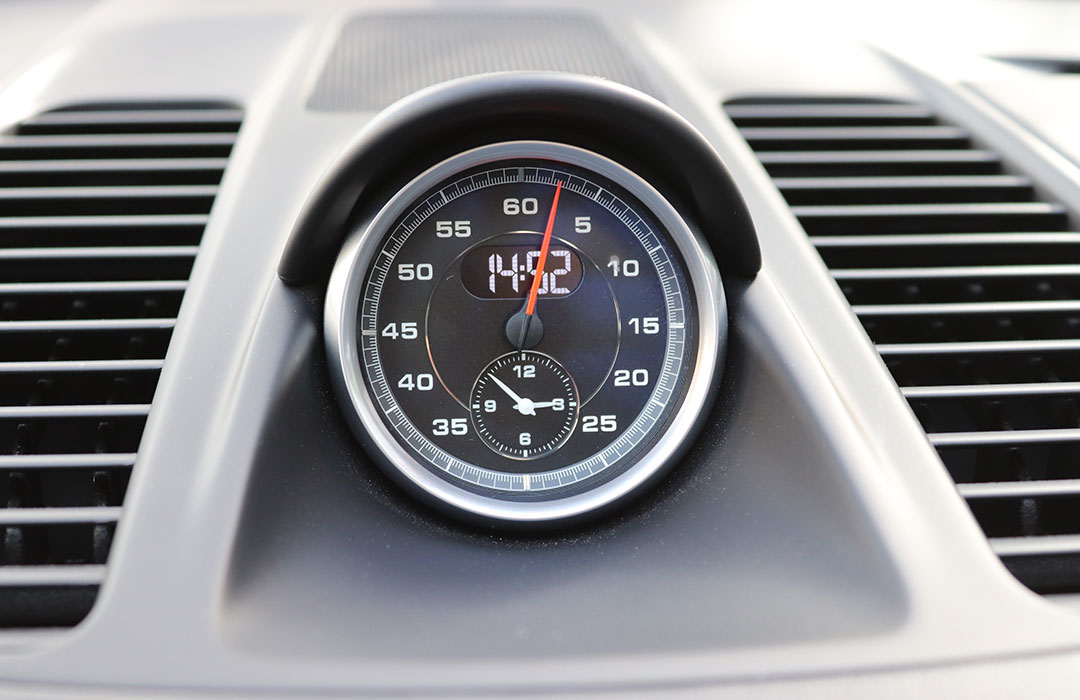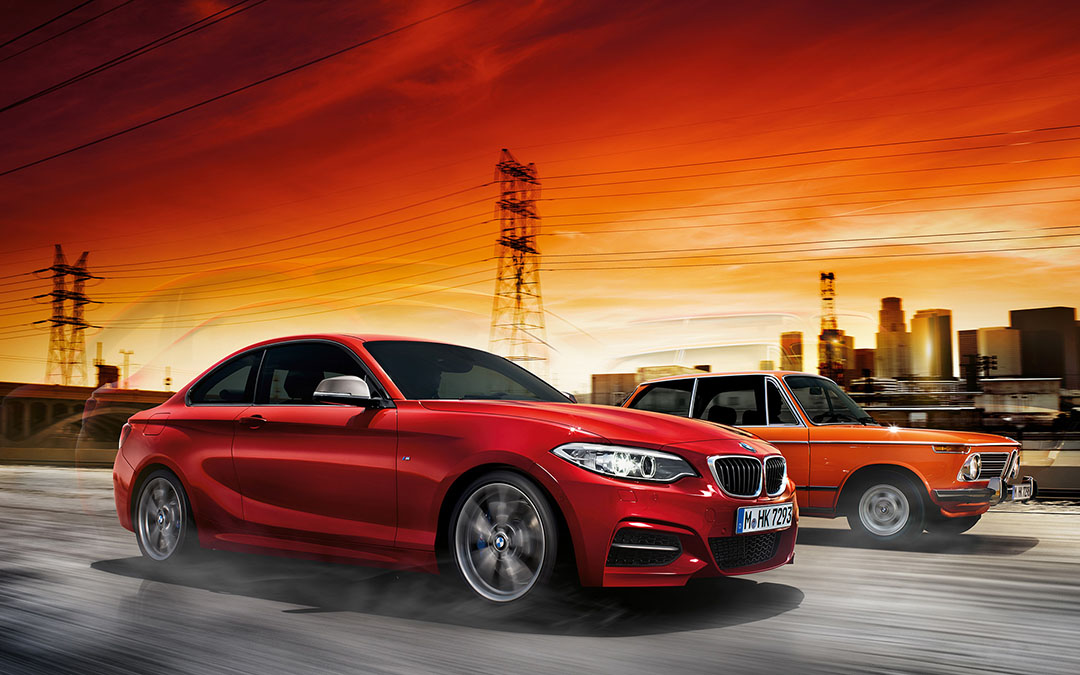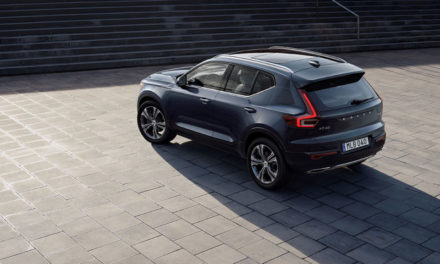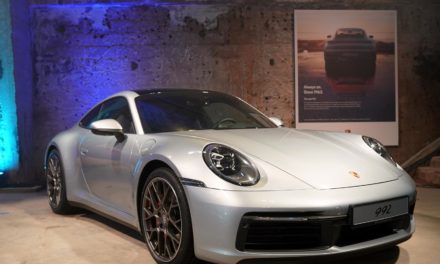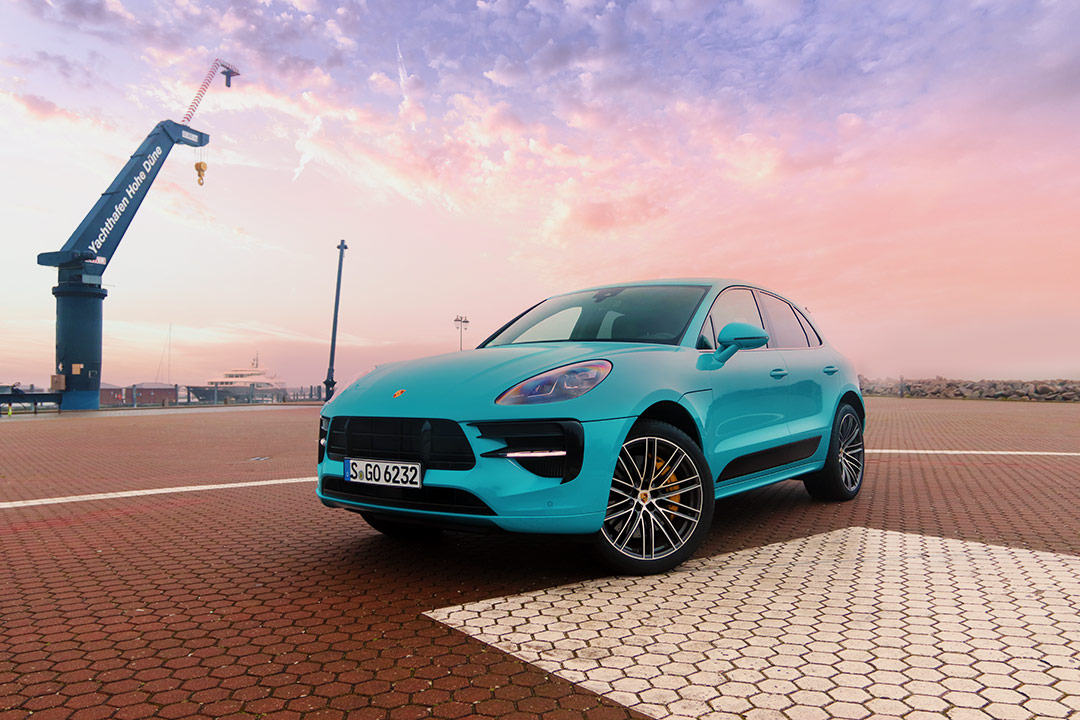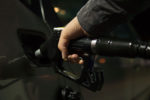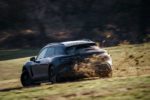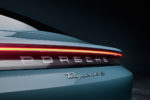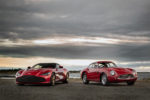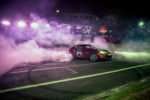Rhapsody in Blue
O
f all the cars in the world, the Porsche 911 stands apart. It’s not about being better, faster or more beautiful, because there are faster machines on the road, automobiles that are built just as well and, frankly, beauty is in the eye of the beholder.
And though the 911’s lines are considered by many, myself included, to be the pinnacle of automotive design, this car is singular for altogether other reasons. At the top of the list is that, with its marvelous flat-six engine nestled in its rump, it has remained a rebel in the automotive industry since 1963. That’s right, this iconic sports car has stuck to its guns despite the naysayers and kept true to the philosophy that made it a legend, keeping the horse behind the wagon. That’s a long time, 55 years to be precise, for a car to retain pretty much the same silhouette and layout.
That’s not to say it hasn’t kept up with the times. Quite the contrary, because it has consistently led the pack when it comes to technological advancements, and in the process has made some difficult concessions for the sake of delivering the best experience possible for – and frequently despite – its loyal fan base. Because, ironically, it has always been those same devoted enthusiasts who object the loudest every time the 911 makes an evolutionary leap – until, that is, they come to realize that the changes only broaden the 911’s potential while adapting to the necessities of the era.
I should also admit that at times one of those annoying voices has been mine, and for that I owe Porsche a huge apology.
You see, I’ve always been mesmerized by the 911, and though I’ve consistently owned Porsches for the past 25 years, I never got around to acquiring what I truly craved: one of these endearing, air-cooled, rear-engine machines that to me represent the height of engineering excellence.
While my closest friends bought one 911 after another, I procrastinated, confident in the belief that I would eventually get around to having one in my driveway. Unlike me, however, Porsche wasn’t procrastinating. The manufacturer had its eye on the future, and the aspirations of a distracted journalist did not exactly rank high on its list of priorities.
But I didn’t remain distracted for long because Porsche soon handed me my first shock: It ditched its air-cooled engines in favor of their more practical water-cooled counterparts. I was furious that Porsche would commit such sacrilege and grew convinced that life as we knew it would cease to exist.
But, as is often the case, I was wrong. As it turned out, while the air-cooled mill had gone as far as it would go, the water-cooled engine that powered the 996 in the late 1990s allowed Porsche to redesign the flat-six so it could accommodate four valves per cylinder, produce more power, lower fuel consumption and reduce emissions. Worthy reasons, if you ask me.
And if you think about it, I really should have known better. After all, the legendary 959’s engine was using air/water cooling 15 years earlier and to this day remains one of the most coveted Porsches in history.
And yet I still didn’t get a 911. I waited as the 997 came around, then the 997.2, and eventually the first 991. During that time, I did sample various examples of these models, including a Carrera, a Carrera S, and a GT3 RS from each of the 997 and 991 generations. I discovered that they only got better and more potent with each generation, which merely reinforced my reverence toward the 911.
Then Porsche did it again. With the makeover of the 991, normally aspirated engines went the way of the dodo and turbochargers became part and parcel of every 911 mill. Not only was I horrified, but also very confused. Apparently, you get turbos in your 911 irrespective of whether your 911 is a Turbo, and engine sizes were reduced significantly. Again, I worried it was a recipe for disaster, and once more feared that life as we knew it would cease to exist.
But turbos have been a part of the automotive industry for decades, installed in everything from BMWs to Buicks. Moreover, they’re associated with boosting power, so why was I worried?
“Who better to teach me to never doubt Porsche again than a turbocharger-equipped 911?”
Let me clear it up for you. In order to start boosting power, turbos need to build up pressure before they can do their job, meaning there tends to be a brief lag rather than a smooth buildup of power from the moment you floor the throttle. Even the original 911 Turbo had lag, and when the turbo finally kicked in, it felt like someone had smacked you upside the head with a tree trunk. As you may already know, hesitation isn’t something regular 911s are known for, so you can appreciate my concerns. And of course, there’s the trademark whine of the turbo, which I feared would intrude or even stifle the glorious sound of the 911’s flat-six engine.
But once again, I should have known better, because I was wrong on every point. Well, almost. And who better to teach me to never doubt Porsche again than a turbocharger-equipped 991.2?
And this was no regular 911, but a graphite blue 991.2 Carrera S Cabriolet fitted with 20-inch RS Spyder Design wheels that made my legs go weak from the second I laid eyes on it. Emotional response? Definitely!
The headlights and taillights are redesigned, as are both the front and rear bumpers. There are new LED daytime running lights, while the grille above the engine has gone from body-colored lateral louvers to black vertical cooling slats that feed air into the intercooler.
This particular 911 even featured an optional center-exit sports exhaust system, affording the car an even more assertive demeanor. And if you look close enough, even the door handles have been redesigned, while on the inside a wave of a hand wakes up the touch screen, which now features Apple CarPlay. And as if all that wasn’t enough to make you swoon, Porsche decided to throw in a steering wheel whose design mimics that of the 918 halo car.
And those were just the visual changes, because from the second the 991’s tires hit the asphalt, I started to discover so much more that was new and different.
These cars do not exactly have a reputation for being gentle rides. They’re meant to be driven, and consequently the suspension is designed to keep the 911 flat and stable on corners. This car, however, was not at all how I remembered the 911 as being, and presented a puzzle: While the chassis felt supremely rigid on bends and the suspension demonstrated that it was bred for high-speed cornering, it was remarkably relaxed and easygoing, even serene, when driven casually.
In fact, this Porsche had no problem cruising sedately around town, and with the PDK transmission proved to be one of the rare instances when traffic doesn’t wear you out. Sure, you personally may want to floor the throttle and tear up the road, but the car itself is patient and more than happy to calmly wait it out until the congestion dissipates. Apparently, in a 911, you can have the best of the both worlds.
Naturally, it took less than a minute after I left the Porsche dealer for any willpower I had to vanish, and I hit the button on the center console to lower the top – you can do that while driving at speeds up to 50 kilometers an hour – and it was down and stowed in a matter of seconds. No, I didn’t time it, I really didn’t care, but I understand it takes around 13 seconds.
Speaking of the top, there’s something different there too with the 991 generations. The entire roof assembly has now been redesigned so it folds in a Z-shape and, with the top up, affords the 991 cabriolet the silhouette of a proper coupe. More importantly, the second generation 991 cabriolet has greatly improved body control, with scuttle shake practically nonexistent. You sense only the merest hint of flex when you encounter a hard bump.
But as I said, my main concern was the addition of turbochargers, and on that point I was happy to discover that the transition has in no way discarded more than half a century of 911 heritage. If anything it’s a new milestone in this car’s extraordinary saga.
The eruption of revs as you start the car immediately establishes that this is still a boxer engine. Porsche has gone to great lengths to ensure that its spanking-new turbocharged 3-liter mill both sounds and feels like a naturally aspirated unit. Yes, with the windows and/or the top down, you can catch the faint whistle of the turbo, but the characteristic rasp of the 911 engine dominates. With the car all closed up, all you hear is the growl of the intake that is piped in to enhance the engine note. Rest assured that it isn’t manufactured, but the actual sound of the engine. That volume can be further increased with the optional Sport exhaust – that’s the one with the two round exhaust tips in the center of the rear bumper – which allows you to open or close exhaust flaps as you desire.
I was immediately struck by how rapidly the revs climbed and the engine built up speed. It was astonishing: There was no noticeable turbo lag despite this being a turbocharged unit. Hit the engine’s peak torque at 1,700 rpm and acceleration becomes a smooth, seamless ascent with the tachometer needle powering to the red line just below 8,000 rpm.
And to get the most out of the engine and bask in that flat-six euphoria, you’d be advised to keep the revs above 5,000, otherwise you’ll find yourself floundering in the unit’s torque curve.
And what a unit it is. While capacity in the turbocharged Carrera S engine is down from 3.8 liters to 3 liters, power has risen to 420 horsepower with 500 Newton-meters of torque from the 400 ponies of its naturally aspirated predecessor, thanks to 16.0 psi of boost compared to the Carrera’s 13.1, adjustments to the engine-management system and a 2-millimeter-larger turbo impeller, all while delivering that power with the same smooth linearity as the Carrera.
What those numbers translate into is blistering acceleration that, with the optional seven-speed PDK transmission, takes you from standstill to 100 kph in 4.1 seconds, to 160 kph in 8.5 seconds and to a top speed of – wait for it – 304 kilometers an hour!
On the highway, the Carrera S behaves like a missile, with the acceleration pressing you against your seat and your heart wondering if it can take it. If you opt for the Sport Chrono Package, which “my” car was equipped with, things get even more fun. Besides the slick stopwatch mounted on the dash, you get the drive mode selector dial on the 918 steering wheel. Of course, what that dial changes depends on what options you have in the car.
In 911s equipped with PDK, you can switch to a more aggressive shifting program that holds gears longer and downshifts when you brake hard. With Sport Chrono the PDK also benefits from launch-control capability.
Set the dial in Sport and Sport Plus modes and the engine becomes more responsive, with the imperceptible turbo lag further reduced (I couldn’t tell; it was imperceptible) as more exhaust gas blows over the turbine before boost is called for. Moreover, electronically adjustable shocks and active engine mounts get tighter while, of course, cars with Sport exhaust get louder in Sport and Sport Plus mode, which is why I never dialed back to Normal.
And hitting the small black Sport Response button at the center of the dial in cars equipped with PDK is the equivalent of ”Ludicrous” mode, with the powertrain and chassis assuming their most aggressive dispositions for some 20 seconds of maximum acceleration.
Finally, you have electronically adjustable dampers (PASM), with shocks having a wider spread of damping and new springs and anti-roll bars. The rear wheels are also half an inch wider. You can now also get the Carrera S with the PASM Sport option, which lowers the car further, as well as the optional rear-wheel steering from the GT3 and the Turbo!
With so many goodies on hand, both standards and optional, the Carrera S has become even more potent than it ever was. Though not quite up to the level of the GT3, it comes close, demonstrating the sort of hungriness that makes you want to tame every road in the country and test your abilities behind the wheel.
It’s also got extraordinary grip, and more than once, even though I was prepared for the physics of driving a car with the engine in its rear end, as I approached tight corners at speed along the road to Tannourine I truly wondered whether I would get through without incident. Yet every time, despite my apprehension, the car took the turns in stride, coming around smoothly like it was a cakewalk. In fact, it even allowed for maneuvering around raised manhole covers while negotiating those tight corners, and at speed! Whose brilliant idea was it to place those things in such hazardous places? The smallest lapse in concentration could result in a broken rim, or worse. Seriously, elections are around the corner, fix those things!
I even found myself having to chase a classic 911 Turbo, whose skilled driver was guiding me over very narrow and unfamiliar mountain roads. The agile Carrera S managed to avoid every pothole, every bump and every fissure in the road while traveling at ridiculous speeds in order to keep up with the black 930. And no, the 930 wasn’t faster; the pilot was the better driver.
I suppose a lot of the extraordinary agility of the Carrera S has to do with the new brakes, which have larger yet lighter front rotors. The pads, which come from the 911 Turbo, have also grown larger. If you dish out the extra cash, you can also get ceramic brakes, the Turbo S’ 16.1-inch ceramic rotors as well as six-piston calipers in front and 15.4-inch rotors at the back.
I’m smitten. And the turbocharger fears have been laid to rest. Though the engine downsizing may have been for fuel economy purposes, the turbo has more than made up for it, all while preserving the character, melody and high-revving nirvana of naturally aspirated 911s.
They say nothing is certain except death and taxes. Well I beg to differ, because there is no doubt whatsoever in my mind that the 911 will remain among the most coveted cars on the planet for a very long time. Unless they move the engine, or it stops being flat, at which point we can discuss my paranoia all over again.

